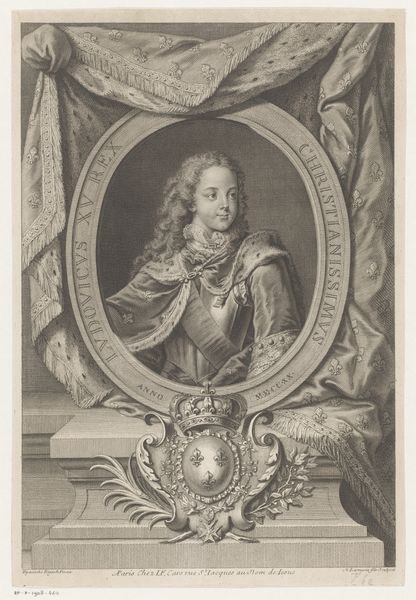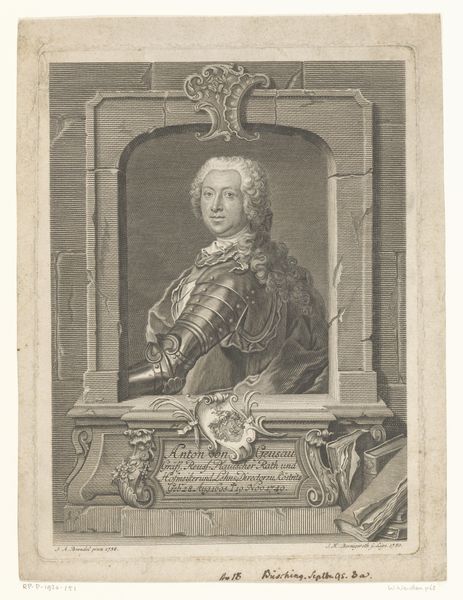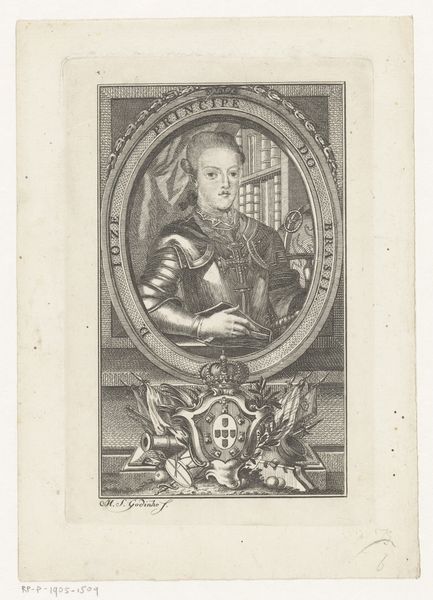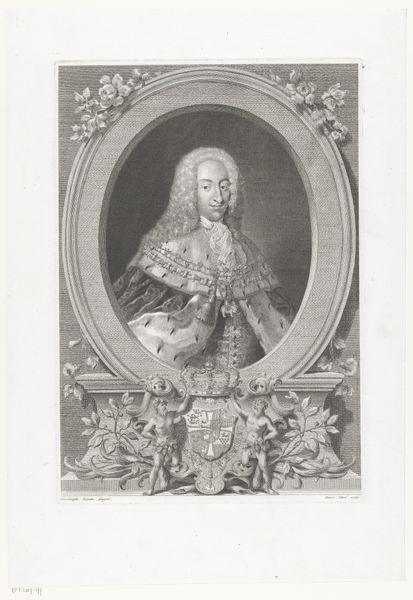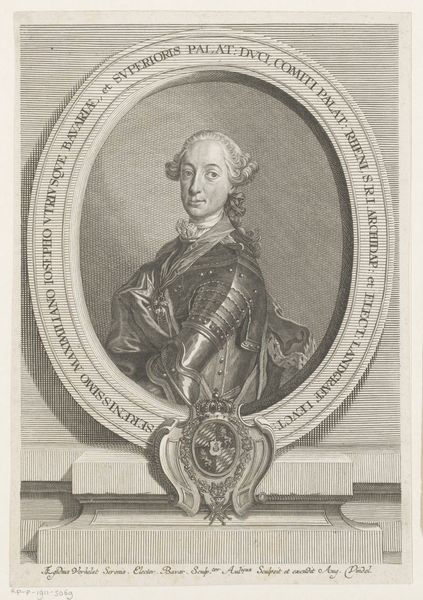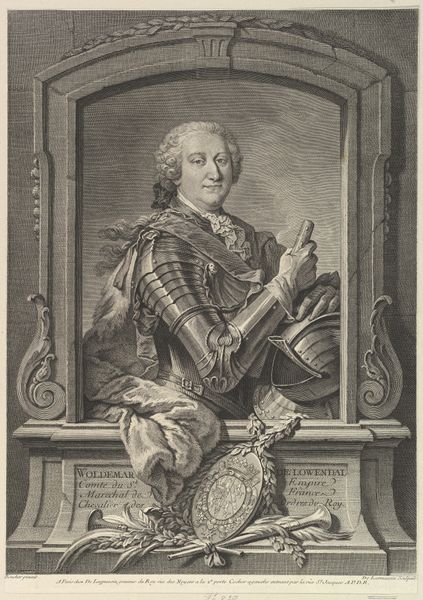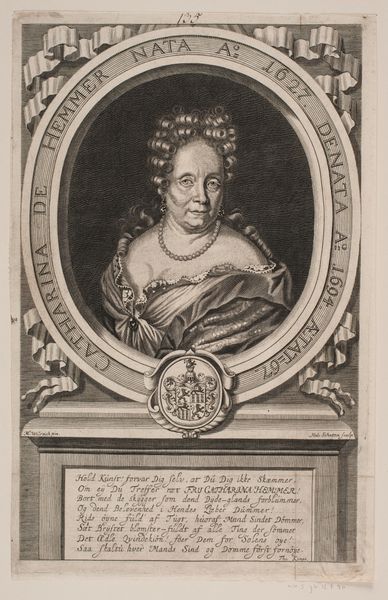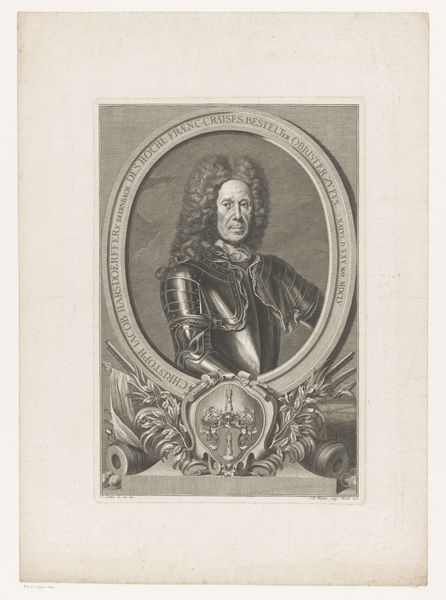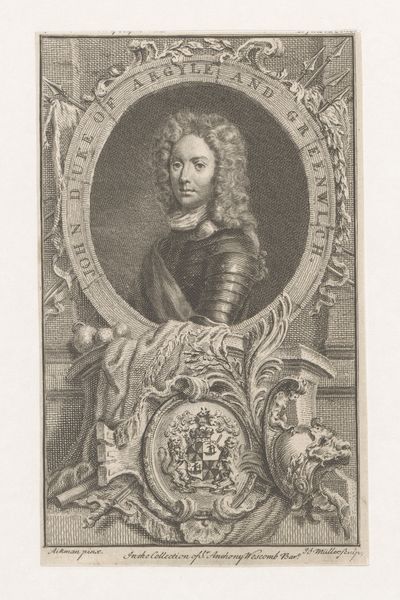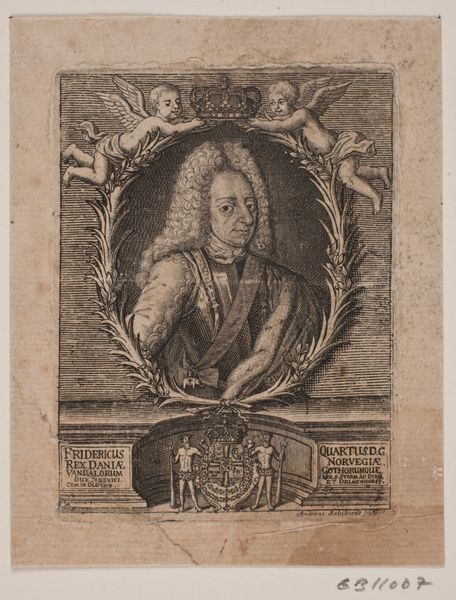
engraving
#
portrait
#
baroque
#
old engraving style
#
history-painting
#
academic-art
#
engraving
Dimensions: height 277 mm, width 168 mm
Copyright: Rijks Museum: Open Domain
Curator: What strikes me immediately about this engraving is the density of its textures and the careful detail used to render them. Editor: Indeed. What we’re observing is "Portret van Anselm Franz von Ingelheim," dating back to 1747, crafted by Johann Wilhelm Windter. It is held at the Rijksmuseum. Note how the academic artistic style elevates a historic persona. Curator: And elevated further by its frame; that ornate Rococo design! The shell motif at the top, framing Anselm’s head… it's quite a statement about status and classical influence. But look closer. Beyond the portrait, consider the labour. Every line here, etched by hand, embodies skill and precision. Think of the hours, the training, the very tools that made this image. The material of the engraving plate itself holds the weight of that process. Editor: An astute observation! Formally, the engraving utilizes chiaroscuro quite effectively. Observe the interplay of light and shadow, giving depth to Anselm's features and the meticulously rendered textures of his garments and the surrounding ornamentation. The composition is carefully balanced; his gaze meets ours directly, engaging the viewer within a constructed visual hierarchy. The portrait creates not just a likeness but also a complex web of semiotic indicators relating to authority and character. Curator: Exactly. The context enriches this portrait too. Engravings like these disseminated power; portraits affirmed it, replicating and broadcasting influence in an era before photography. We are dealing with a cultural and industrial product here. Editor: Yes, this work serves as both historical record and artistic achievement, simultaneously. I appreciate that we could tease apart a richer understanding through our dialogue. Curator: Me too. It allows a deeper acknowledgement of the craft behind the image.
Comments
No comments
Be the first to comment and join the conversation on the ultimate creative platform.

